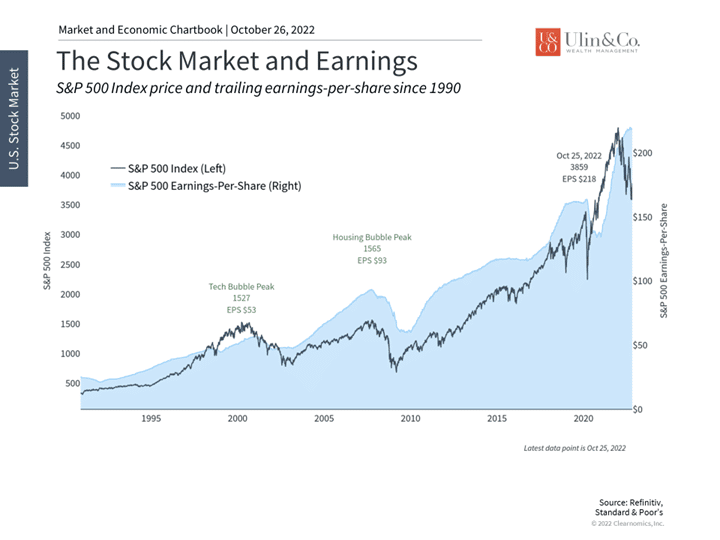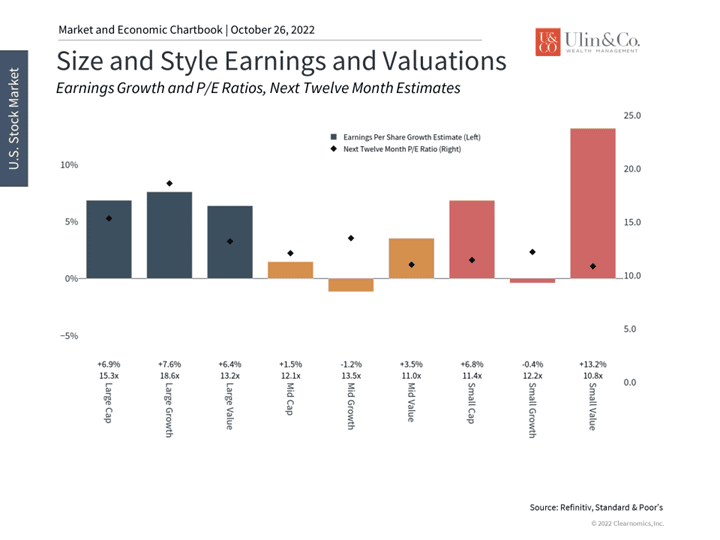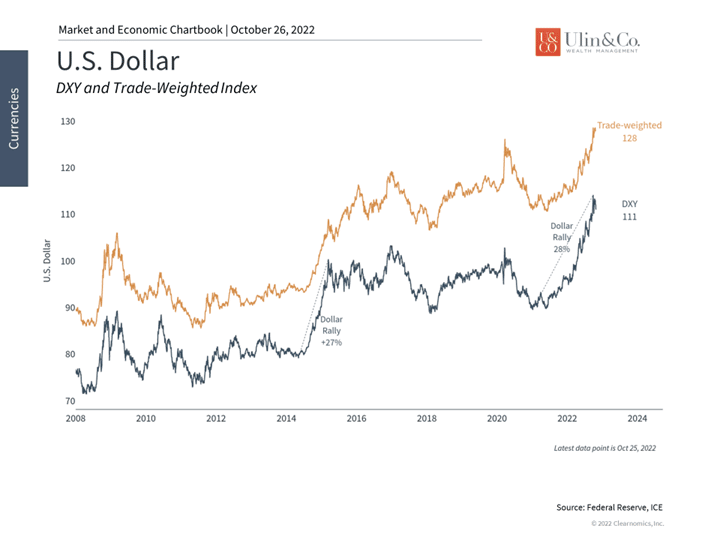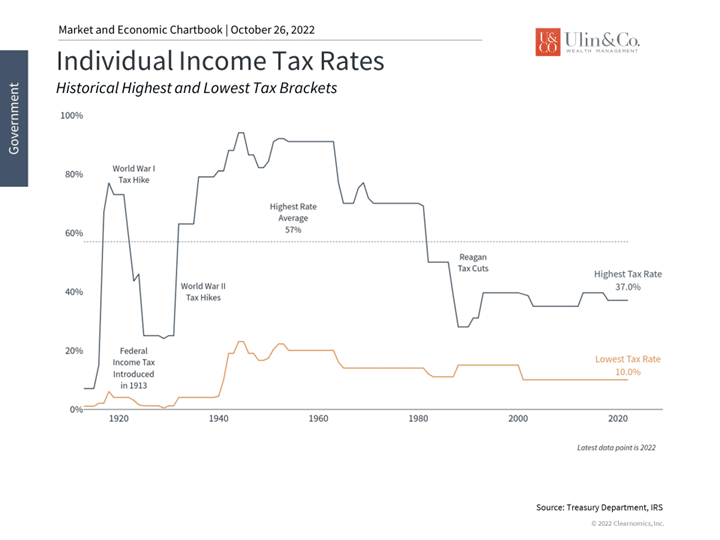Dead Cat Bounce May Not Emerge from Earnings
This year has been distinguished by market and economic swoons through a painful bear market due to inflation, the Fed, geopolitics, and more. Investor and market anxiety has been prolonged by the fact that these economic effects take a long time to evolve and eventually diminish.
Inflation is not an overnight event but the result of over $5 trillion dollars of stimulus money and supply-side and demand factors coming out of the pandemic, compounded by Fed policies including a period of ultra-low rates. The effects of Fed rate hikes are felt over months and quarters, not days or weeks. The spike in energy and commodity prices due to the war in Ukraine will not be resolved quickly. Political events in China, the U.K., and the upcoming U.S. midterm election only add to this uncertainty. These facts underscore the need for investors to focus on the long run and resist the urge to react to every market movement, whether positive or negative.
Fed Chair Jerome Powell should absolutely take a break after the expected November rate hike and allow the “medicine” to absorb a bit into the economic system to help wring out liquidity and reduce inflation, rather than continue to have a hawkish attitude. Jay may be getting that message, which is good for the markets and investor sentiment.
Jon here. Perhaps the most important way to stay grounded this year is by being familiar with the trends, facts and figures that drive markets in the long run like jobs and corporate earnings, rather than the speculation and ominous opinions that occupy headlines to financial news shows with celebrity investors, CEO’s and media personalities hyping that the next leg of an Armageddon crash is right around the corner.
Focus on Earnings
It’s for this reason that investors focus heavily on corporate earnings since they are the link between the economy and markets. Although markets can fluctuate in the short run, rising earnings are what allow stocks to create wealth for investors over full business cycles. The performance of the stock market and earnings growth have greatly differed this year and trended in opposite directions. (see below)
Earnings continue to tick up through this year powered by strong consumer spending that will help to divert a great recession. Today’s GDP reports note the U.S. economy advanced in the third quarter at an annual rate of 2.6%, reversing a six-month slump. It should also come as no great surprise that after being a wee-bit oversold, the Dow Jones index is up over 10% for the month, leading it to be one of the best Octobers in the index’s 126 year industry history (since 1896) as investors shake off their worst frights and fears.
Dead Cat Bounce
Will the October stock momentum lead to a dead cat bounce? Or with interest rates to the VIX rangebound, inflation projected to taper down over the next year, and the average crash lasting nearly 13 months, perhaps it’s a sign of better quarters and years ahead? We believe the latter. The average recession downturn is about 30% on average while the average non-recessionary bear market trends near 24% as we are currently experiencing. It would be unusual to see a 30%- 40% larger downturn of the DJIA index like an ’08 great recession in the current economic environment despite big blue chip leader names from FedEx, Alphabet, Amazon, Netflix and now Meta (Facebook) stock tanking.
A dead cat bounce is an investing term for the temporary rise in the price of a stock or other asset during a long period of decline. The morbid term comes from the idea that if it falls far enough, even a dead cat will bounce. Technically speaking, a dead cat bounce can only be identified after it happens. The “bounce” is the short-term price increase that is preceded and followed by decline. Instead of losing sleep to doom and gloom reports, consider the following four trends and factors that provide a bit of optimism.
In the long run, the stock market follows corporate profits

Inflation and slower growth are directly impacting corporate earnings reports but the numbers remain positive. Consensus estimates are that S&P 500 earnings-per-share will grow 6.9% over the next twelve months, still healthy but below the average of 7.9% since the mid-1980s. It is still early in the current earnings season for the third quarter, with about a quarter of S&P 500 companies having reported, but overall earnings are exceeding beaten-down expectations. Still, many companies are reporting rising costs, slower consumer demand, a buildup in inventories, etc., as would be expected in this environment.
Corporate profits are still positive but falling

The chart above shows that earnings expectations differ across types and sizes of companies. Large cap stocks representing the largest U.S. companies are still expected to do well even if these numbers may fall further due to the strong U.S. dollar. A stronger dollar hurts larger companies disproportionately since they tend to have international sales. When the dollar strengthens, dollar-denominated goods become more expensive in other currencies, and foreign currency translation back to dollars is less favorable. It’s difficult to pin down an exact percentage of revenues that come from overseas but estimates by Standard & Poor’s suggests it’s around one-third. Small cap companies, on the other hand, are more sensitive to U.S.-based demand and are directly impacted by slowing growth and rising costs.
The U.S. dollar is near record strength

It is also positive that nine of the eleven S&P 500 sectors are expected to experience earnings growth over the next year. While analyst forecasts for earnings growth are not always accurate and earnings may fall further, current consensus forecasts suggest that investors expect a slowing of earnings rather than a 2008 or 2020-style collapse in profitability. Not only do growing earnings continue to support market valuations, which are the most attractive in years, but they are a reason to stick to appropriate asset class allocations in portfolios. Since not all sectors can be expected to perform well at all times, and rotations in sector leadership between tech, energy, and others have occurred recently, staying diversified both across and within markets remains important.
Another key consideration for earnings is how the consumer is faring. Government stimulus checks in 2020 and now rising prices for everyday necessities have impacted consumer spending in both directions. Personal savings rates reached a record level of 33.8% during the pandemic but have declined to 3.5% as of August, well below the historical average of 6.8%. The ongoing bear market and stalling housing prices may also have a “wealth effect” on how financially secure households feel, impacting spending further.
The IRS updates for 2023 may help many households

These impacts have not all yet appeared in the data since retail sales have continued to grow on a year-over-year basis. The recently announced IRS adjustments to income tax brackets and the standard deduction could also help consumers. Each year, the IRS makes adjustments to match the average year-over-year increase in what is known as the “Chained Consumer Price Index,” so that taxpayers don’t “creep” into higher tax brackets due to inflation. The IRS has announced 7% increases to these ranges and deductions for the 2023 tax year. As a result, many workers could see higher take-home pay starting January as payroll deductions decrease. These excess savings will be a welcome change for consumers even if they don’t fully offset higher prices.
The bottom line? Investors should not expect the October gains to lead to a dead cat bounce. Continue to focus on factors that matter in the long run, including corporate earnings. This can help investors to stay disciplined and patient as macroeconomic events take time to play out.
For more information on our firm or to get in touch with Jon Ulin, CFP®, please call us at (561) 210-7887 or email jon.ulin@ulinwealth.com.
You cannot invest directly in an index. Past performance is no guarantee of future returns. Diversification does not ensure a profit or guarantee against loss. All examples and charts shown are hypothetically used for illustrative purposes only and do not represent any actual investment.
The information given herein is taken from sources that IFP Advisors, LLC, dba Independent Financial Partners (IFP), IFP Securities LLC, dba Independent Financial Partners (IFP), and its advisors believe to be reliable, but it is not guaranteed by us as to accuracy or completeness. This is for informational purposes only and in no event should be construed as an offer to sell or solicitation of an offer to buy any securities or products. Please consult your tax and/or legal advisor before implementing any tax and/or legal related strategies mentioned in this publication as IFP does not provide tax and/or legal advice. Opinions expressed are subject to change without notice and do not take into account the particular investment
objectives, financial situation, or needs of individual investors. This report may not be reproduced, distributed, or published by any person for any purpose without IFP’s express prior written consent.




